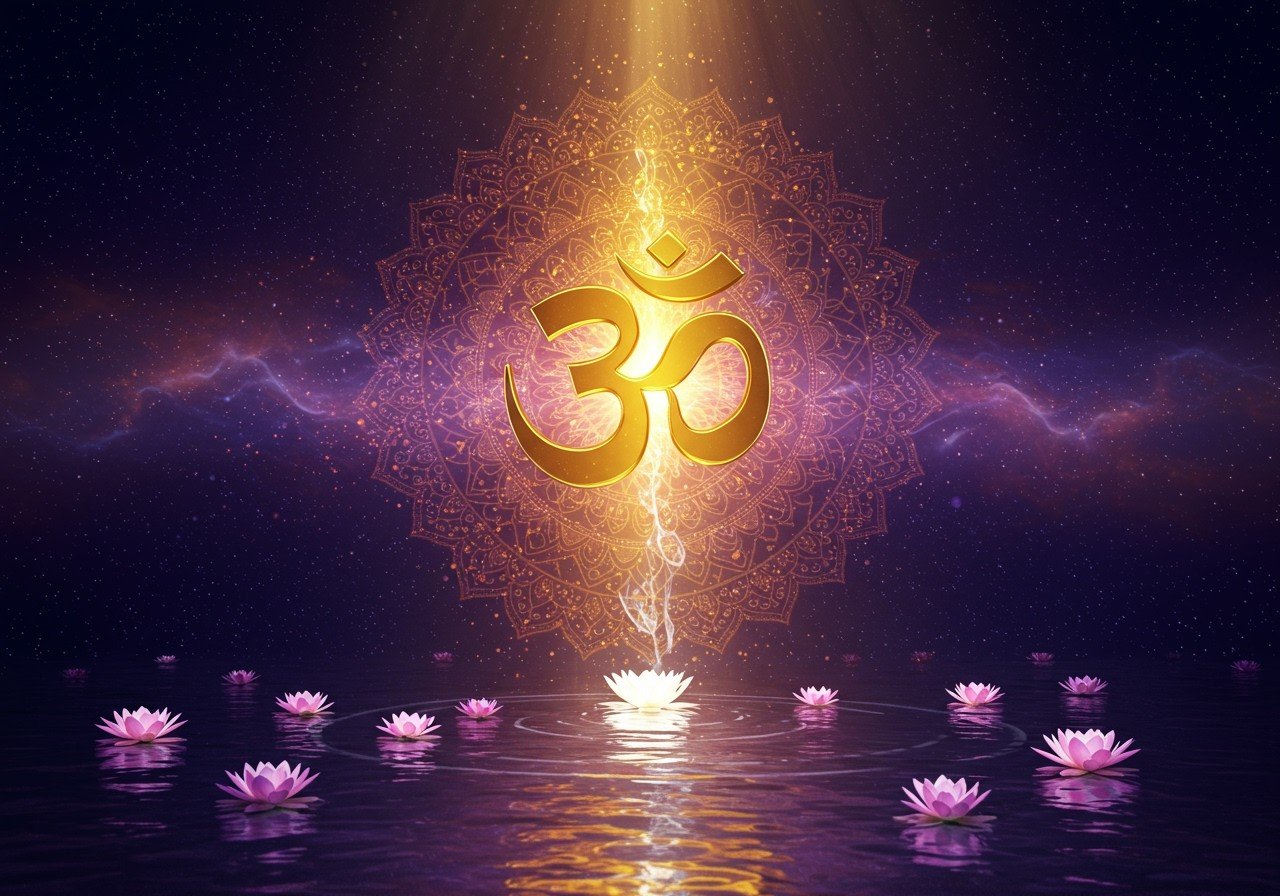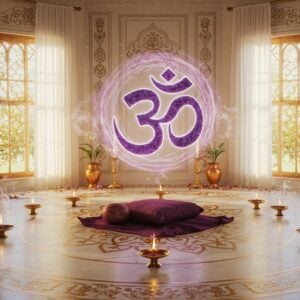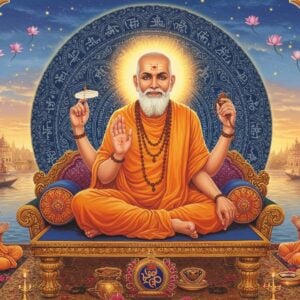
Om, also written as Aum, is a sacred syllable and spiritual symbol deeply rooted in Hinduism, Buddhism, and Jainism. Revered as the most powerful mantra, it represents the essence of ultimate reality and consciousness. This exploration delves into Om’s origins, meanings, and significance in spiritual practices.
The Origins and History of Om
The syllable Om’s origins can be traced to the ancient Vedas, the oldest scriptures of Hinduism. Initially mentioned as a cosmic sound, Om’s significance evolved through the Upanishads, where it became associated with Brahman, the ultimate reality. The Mandukya Upanishad elaborates on Om’s connection to the three states of consciousness: waking, dreaming, and deep sleep. Over time, Om transformed into a sacred syllable, integrated into numerous spiritual traditions. It’s a key element of the pranava mantra, representing the essence of ultimate truth.
The Meaning and Symbolism of Om
Om is a bija mantra, a seed syllable representing the fundamental sound of the universe. Its three components—A, U, and M—symbolize creation, preservation, and transformation. In Hinduism, Om represents the divine trinity of Brahma, Vishnu, and Shiva. Furthermore, Om embodies the past, present, and future, highlighting the cyclical nature of time and existence. Spiritually, Om connects individuals with ultimate consciousness, serving as a powerful tool for meditation and enlightenment.
Looking to dive into Meditation? This post can help you begin your journey.
Om’s Representation and Significance
Om symbolizes eternal truth (Satya) and divine energy (Shakti). It transcends religious and cultural boundaries, signifying the interconnectedness of all beings. This unifying sound harmonizes the body, mind, and spirit during meditation and chanting. Om is a prominent symbol in sacred art and architecture, appearing in mandalas, temple carvings, and other spiritual contexts, representing vibrational alignment with the cosmos.
Want to understand the power of other mantras? This post will introduce you to Gayatri mantra.
The Use of Om in Mantras and Meditation
Om is an integral part of numerous mantras in Hindu and Buddhist traditions. Chanting Om at the beginning and end of mantras amplifies their spiritual power and enhances focus. This practice offers therapeutic benefits, including stress reduction, improved concentration, and increased spiritual awareness. Om is prominently featured in widely practiced mantras like the Gayatri Mantra and Om Mani Padme Hum. Om meditation is a pathway to inner peace and spiritual growth.
The Deep Essence of Om
Om is the essence of the supreme Absolute, consciousness, Ātman, Brahman, or the cosmic world. It is the sound of the universe, unifying everything within its infinite embrace. Om serves as a bridge between the individual self and the vast cosmos.
Poojn.in: Your Resource for Spiritual Products
Enhance your spiritual journey with authentic products from Poojn.in. We offer a wide variety of items to deepen your connection with Om and other spiritual practices:
- Mala Beads: Explore our collection of sandalwood, rudraksha, and other mala beads to enhance your chanting and meditation practice. Our mala beads are crafted with high-quality materials and infused with positive energy.
- Spiritual Statues and Idols: Invite divine presence into your space with our beautiful selection of handcrafted statues and idols. We offer a variety of deities, crafted from durable materials.
- Incense and Dhoop: Create a sacred ambiance with our range of incense and dhoop. Our aromatic offerings promote relaxation and enhance the spiritual atmosphere of your home or meditation space.
Visit Poojn.in to discover our complete collection of spiritual products. We offer secure packaging, fast delivery across India, and authentic products sourced from trusted manufacturers.
Embracing Om in Daily Life
Integrating Om into your daily routine, whether through meditation, chanting, or mindful reflection, establishes a profound connection with the divine. Om serves as a constant reminder of the interconnectedness of all beings and encourages a life of mindfulness and reverence. Let Om guide your spiritual path, offering clarity, tranquility, and a deeper understanding of your place in the universe.
Frequently Asked Questions About Om
What is the meaning of Om? Om is a sacred sound representing ultimate reality, consciousness, or Atman.
It is considered the most powerful mantra, symbolizing the divine and the universe’s interconnectedness.
What are the origins of Om? Om originates from the ancient Vedic texts of India.
Considered the sound of creation, its significance has evolved through centuries of spiritual practice.
What does Om symbolize? Om represents the threefold division of time (past, present, future) and the three states of consciousness (waking, dreaming, deep sleep).
It also symbolizes the divine trinity of Brahma, Vishnu, and Shiva in Hinduism.
Why is Om used in mantras? Om is used in mantras because it is believed to be the primordial sound of creation.
It prepares the mind for meditation and establishes a connection with the divine.
Can anyone chant Om? Yes, anyone can chant Om regardless of religious background.
It is a universal sound promoting peace, mindfulness, and spiritual growth.
How does chanting Om affect the body and mind? Chanting Om calms the mind, reduces stress, improves concentration, and has a soothing effect on the nervous system.
The vibrations of Om can promote overall well-being and a sense of inner peace.
Is there a proper way to chant Om? Om is typically chanted in three parts: A-U-M, each pronounced clearly with focus on the sound and vibration.
Allowing the sound to resonate within the body enhances the spiritual experience.
Can Om be used for meditation? Yes, Om is commonly used as a focal point during meditation.
It helps center the mind and promotes a sense of peace, clarity, and deeper connection.


